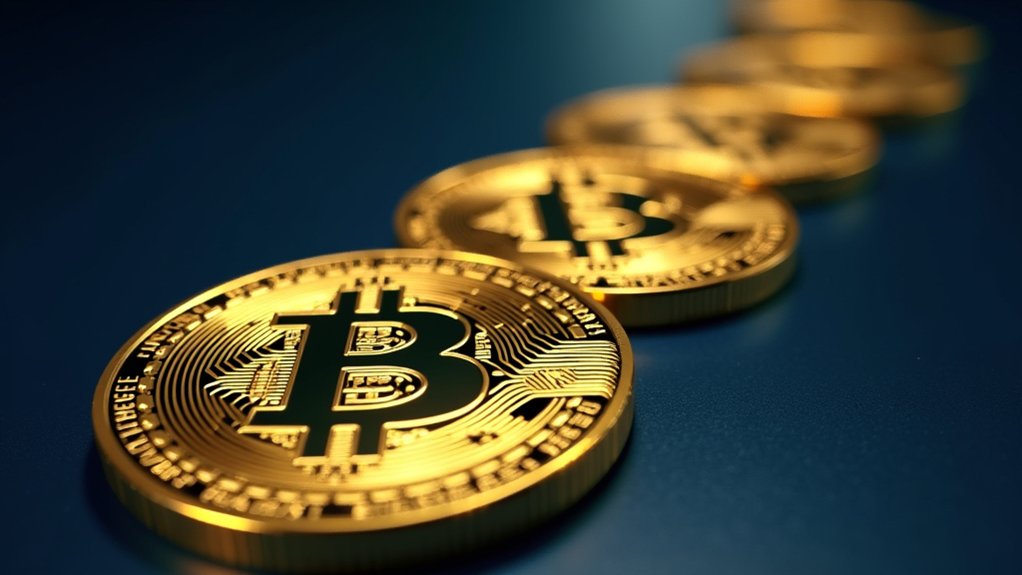DApps are decentralized applications that run on blockchain networks, operating without central authority or corporate overlords. These autonomous programs use smart contracts to execute code and handle transactions transparently – every action visible on the public ledger. From decentralized exchanges to blockchain games, DApps are reshaping how we interact with digital services. While they face challenges like scalability and complex user experiences, DApps represent a radical shift in how software applications function. The rabbit hole of decentralization goes much deeper.

While traditional apps keep users locked into centralized systems, DApps are flipping the script on how we interact with digital services. These decentralized applications run on blockchain networks like Ethereum, Binance Smart Chain, and Solana, operating without any central authority pulling the strings. No middlemen, no corporate overlords – just pure, autonomous code executing exactly as programmed through smart contracts. Smart contract vulnerabilities can pose significant security risks to users and their assets.
The beauty of DApps lies in their transparency. Every transaction, every line of code is out there for anyone to inspect. Try finding that level of openness with your favorite social media app. DApps use cryptographic tokens for access and incentives, while consensus mechanisms guarantee everyone plays by the rules. With daily DApp releases observed since February 2018, the ecosystem continues to expand rapidly.
Transparency isn't optional with DApps – it's baked into their DNA, where every action is visible and verifiable through blockchain technology.
And good luck trying to shut them down – with no single point of failure, these applications keep running even when traditional services would crash and burn. Like the public ledger system that powers cryptocurrencies, DApps maintain transparency and security through decentralized networks.
The cryptocurrency world has embraced DApps in countless forms. Decentralized exchanges let users swap tokens without traditional intermediaries. DeFi platforms enable lending and borrowing without banks. NFT marketplaces, blockchain games, and decentralized social media platforms are reshaping how we think about digital ownership and interaction.
Sure, DApps aren't perfect. Scalability remains a headache on some networks, and let's be honest – the user experience can feel like rocket science to newcomers. Regulatory uncertainty looms large, and the volatile nature of cryptocurrencies keeps things interesting, to put it mildly. Interoperability between different blockchains? Still a work in progress.
But the future of DApp development looks promising. Artificial intelligence integration is on the horizon, and developers are finally getting serious about making user interfaces that don't require a PhD to navigate.
Cross-chain applications are breaking down barriers between blockchain networks, while specialized programming languages are making development more efficient. As decentralized autonomous organizations (DAOs) gain traction, it's clear that DApps aren't just a crypto fad – they're fundamentally changing how we think about software applications in the digital age.
Frequently Asked Questions
How Much Does It Cost to Develop a DAPP From Scratch?
Building a DApp isn't cheap – costs vary dramatically based on complexity. Basic DApps start around $10,000, while complex ones can exceed $500,000.
The total typically includes smart contract development ($5,000-$20,000), front-end work ($3,000-$15,000), and blockchain integration ($10,000-$50,000).
Don't forget security audits and testing. Plus, there's that pesky annual maintenance fee of 15-20% of initial costs.
Yeah, blockchain development isn't for penny-pinchers.
Can DAPPS Be Removed or Deleted From a Blockchain Network?
Here's the hard truth about DApps – they can't simply be deleted from blockchain networks. Period.
Once deployed, smart contracts are permanent residents of the blockchain. Users can disconnect their wallets and revoke permissions, but the DApp's core code lives on forever.
Think of it like a digital tattoo – you can cover it up, but it's still there.
The best alternative? Implement restrictions or migrate to newer versions.
Are DAPPS More Secure Than Traditional Mobile Applications?
DApps generally offer enhanced security compared to traditional apps, thanks to their decentralized architecture and smart contracts.
No central point of failure means hackers can't just breach one server and steal everything. However, they're not invincible. Smart contract bugs can be catastrophic, and user key management is tricky.
Traditional apps might actually be safer for average users who aren't tech-savvy enough to handle crypto security properly.
What Programming Languages Are Commonly Used for DAPP Development?
Several key programming languages dominate DApp development.
Solidity rules the Ethereum ecosystem – it's basically the godfather of smart contracts.
JavaScript handles the front-end stuff through Web3.js and ethers.js, making DApps actually usable for humans.
Rust powers Solana's blazing-fast blockchain, while Go keeps things running smoothly on platforms like Hyperledger Fabric.
Each brings something unique to the table – security, speed, or scalability.
How Long Does It Typically Take to Build a Basic DAPP?
Building a basic DApp typically takes 2-4 months, but that's just for the simple stuff.
Want something fancier? Better settle in for the long haul. The timeline depends on several factors – complexity, team size, and whether Mercury's in retrograde (kidding).
A bare-bones MVP can be knocked out in 1-3 months, while more complex projects stretch to 8-12 months.
Planning takes 2-4 weeks, smart contracts 4-8 weeks, and frontend development another 4-8 weeks.





